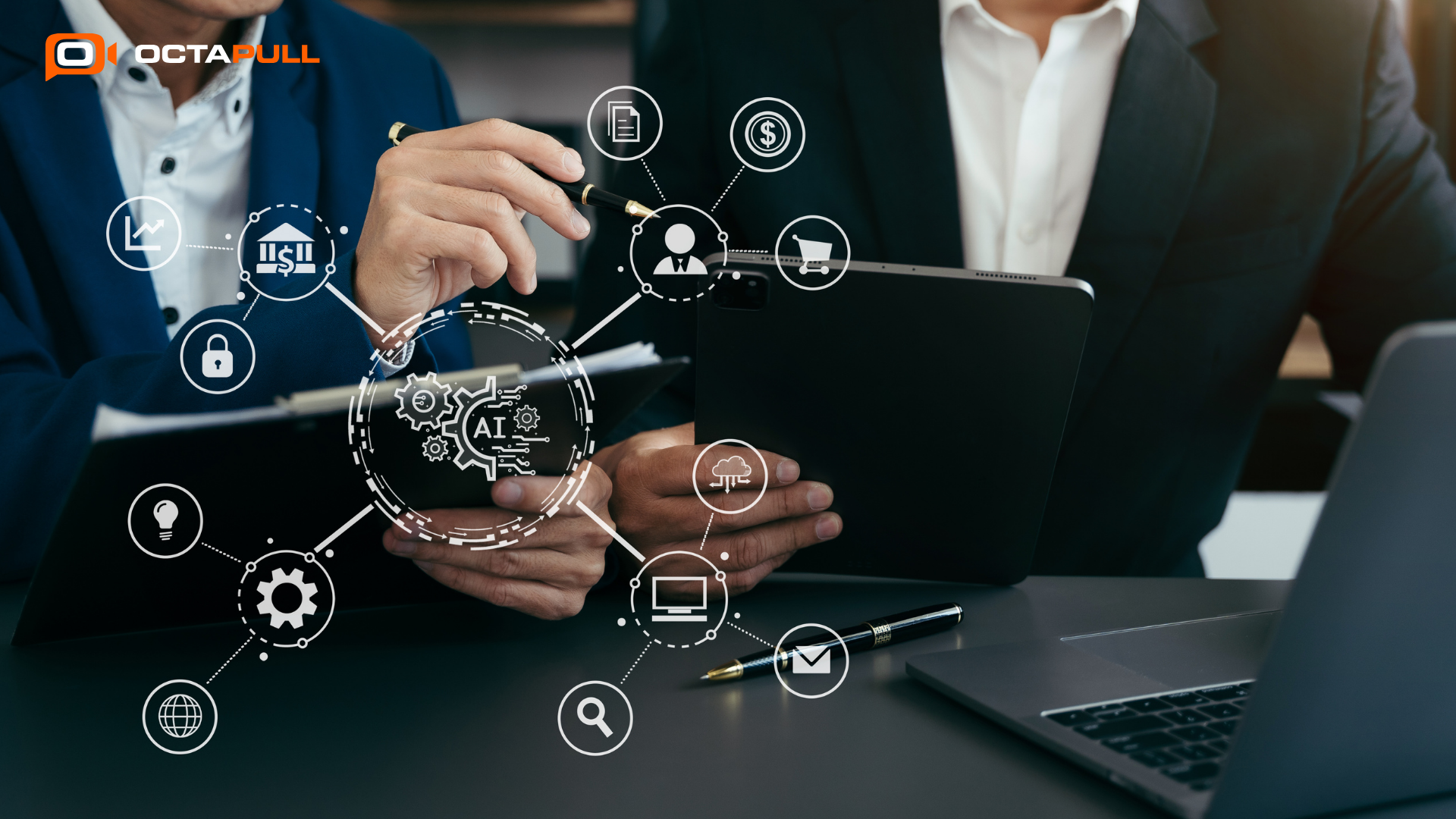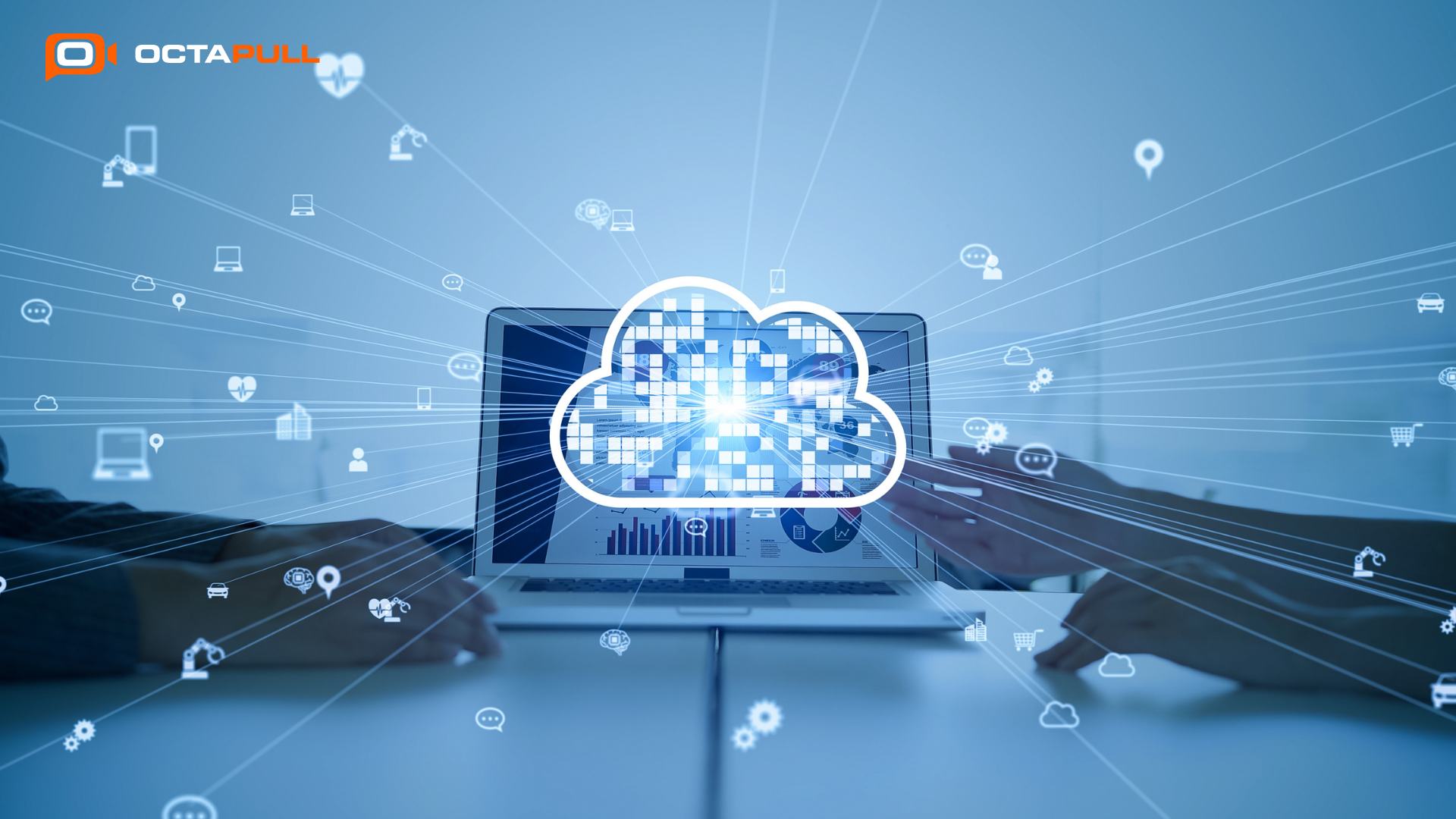In today’s fast-evolving age where digital transformation has gained significant importance, edge computing comes forward as a revolutionary approach to data processing and network optimization.
As a decentralized computing model that focuses on bringing processes closer to where data is generated, edge computing offers various advantages such as minimized latency, enhanced security, and improved efficiency of internet-based applications.
While edge computing is used in various industries including manufacturing, energy, healthcare, retail, and communication, it is expected to become an essential part of other industries.
In this sense, video conferencing applications such as OctaMeet support businesses in their digital transformation by offering a robust and easy-to-use platform. With its high-quality video, voice, and sharing capabilities, organizations can benefit from interactive and engaging meetings, increasing team collaboration and productivity.
What is Edge Computing?
Edge computing is a networking approach that focuses on bringing computing closer to the data source and simplifying processes in the cloud by moving them to local places.
By optimizing local hardware in remote places such as user computers, Internet of Things (IoT), and edge servers (network entry points), the communication between the servers and client devices is minimized.
This allows edge devices to maintain reliable communication with data centers, even offline, and to continue sending data asynchronously when the connection is re-established.
Since only necessary data is processed in the cloud and data center which act as a central hub/platform, edge computing can significantly improve bandwidth usage and reduce connection latency. This also increases the performance of internet-based applications.
Significantly high amounts of data are produced thanks to technologies such as the Internet of Things IoT devices, artificial intelligence (AI), and machine learning (ML). However, traditional computing models that rely on centralized data centers are often not able to handle and process such data fast enough.
In this sense, edge computing alleviates this issue by processing and storing data closer to the devices where it is produced. This reduces the traffic load on the network, improves response times, and application performance, and enhances overall user experience.
How does Edge Computing Work?
Edge computing requires three components to function. These are edge devices, networks, and infrastructure. Edge devices collect data with their capabilities and edge networks provide a network ecosystem to support these devices.
On the other hand, edge infrastructure refers to both the software and hardware of edge environments.
Edge Devices
Edge devices are the devices that collect data and are placed on the very edge of the network. To collect, process, and send data, these devices must possess sufficient technological capabilities including storage and connectivity (Wi-Fi, Bluetooth, NFC).
These include IoT devices, smart devices such as smart cameras, and wearables.
Edge Networks
Edge networks create the necessary network environment for edge devices, providing connectivity and computing resources.
Multiple edge devices can be connected to the edge networks, and data processing takes place near these devices instead of transferring them to a remote data center or cloud server.
Edge Infrastructure
Edge infrastructure consists of necessary hardware and software components that support the edge networks such as local on-premises data centers and edge devices, providing necessary resources for data processing and real-time data analysis.
With these resources, edge devices can transfer reliable and accurate data that can support the decision-making processes of organizations.
What are the Advantages of Edge Computing?
Effective Time Management
As edge computing eliminates the need to depend on a central platform, organizations can process data in real-time, in a more reliable, efficient, and quicker manner.
Thanks to reduced latency, quality issues regarding data from different sources such as cameras, sensors, and smart devices are minimized, and security threats can be prevented on time.
Enhanced Data Security
Having devices in large numbers that are connected to the internet may cause security concerns for organizations. Edge computing, in this sense, eliminates such concerns by allowing organizations to store and process their data locally.
As less data would be transferred over the network, security issues and threats could decrease significantly.
Reliable Performance
With edge computing, enterprises do not have to transmit all the data they collect to a cloud platform or data center located remotely.
By processing data in a short time and optimizing their operations accordingly, they can prevent network issues such as delays and increase their overall performance.
Reduced Costs
As organizations and enterprises process their data in local environments, they can rely less on cloud computing and reduce their IT expenses. They can also decrease their data transmission costs by keeping necessary data in their local network.
Use Cases of Edge Computing
Edge computing has various use cases in different industries and sectors, including energy, retail, manufacturing, healthcare, and internet-based applications such as video conferencing.
Energy
Companies in the energy sector such as oil, gas, and renewable energy can benefit from edge computing to increase efficiency, facilitate maintenance, and minimize the effects of connection shortfalls.
IoT sensors placed in energy sources can not only withstand harsh weather conditions but also process and send the necessary information to data centers in time to provide safety alerts and avoid dangerous situations such as malfunctioning.
Retail
With edge computing, retailers can get insights into large amounts of data they collect and process them in real-time. Using such data, they can manage their marketing campaigns in their store more effectively and manage their stocks and inventory more efficiently.
Healthcare
Smart devices such as IoT and monitors powered by edge computing can collect data on patients and send critical information such as temperature, oxygen, and blood sugar levels to the healthcare provider’s network.
As only necessary data is transferred and such data is only locally stored, healthcare organizations can improve privacy protection and confidentiality, preventing data losses.
Manufacturing
Manufacturers can use sensors to provide quality checks, monitor regular maintenance, and take safety measures for employees. The use of sensors and smart devices can increase productivity, reduce costs, and avoid potentially dangerous delays.
Video Conferencing Solutions
Video meeting software uses both video and voice data from devices and sends them to data center to process, which can cause issues regarding bandwidth and slowing down of connections.
With edge computing, video conferencing solutions can bring the backend processes closer to the devices to lower latency and prevent lags during online meetings.
What are the Differences between Edge Computing and Cloud Computing Models?
Cloud computing models, including SaaS, PaaS, and IaaS, enable organizations to store and process their data in remote servers over an internet connection, which often requires monthly subscriptions.
Organizations can eliminate the need for physical IT infrastructure and maintenance costs, and benefit from advantages such as a better environment for software development, security capabilities, and enhanced use of the Internet of Things (IoT).
On the other hand, edge computing allows organizations to work with and process data in real-time, without the need to contact a datacenter/no need for a datacenter as a bridge
Only sending the necessary data to the data center for faster and more efficient processing. As irrelevant data does not need to be stored on cloud networks, connection latency is improved, and networking costs are reduced.
Future of Edge Computing
As a decentralized computer architecture, edge computing enables organizations in various industries to provide enhanced personalized customer experiences and maintain the continuity of business operations.
- Smart Cities: Edge computing enhances real-time data analysis for traffic management, public safety, and environmental monitoring.
- Smart Homes: Integration of IoT devices enables seamless automation of appliances, security systems, and energy management.
- Smart Vehicles: Instant and effective decision-making for smart vehicles allows for enhanced safety on the roads.
- Enhanced Customer Experience: Using the power of edge computing and data analysis, organizations can improve their products and provide better customer experience and technical support.
The Role of Digital Transformation in Communication
With the increasing importance of digital transformation and remote working, businesses must adapt to these changes to maintain their processes and stay competitive with their rivals. Digital transformation offers several advantages, including reduced costs, the ability to recruit talents worldwide, and the coordination of agile teams.
In this sense, video conferencing software such as OctaMeet provides an ideal platform for communication needs, allowing businesses to enhance the efficiency of remote teams and successfully continue their operations.
Here are some of the key advantages of video conferencing software:
- Real-time Team Collaboration: Facilitates instant communication and decision-making through the use of video, voice, and message-based capabilities.
- Cost-effectiveness: Reduces travel expenses such as daily commutes and minimizes the need for physical office environments. Businesses can allocate their resources to other necessary areas.
- Flexibility: Supports remote work and flexible schedules, offering employees the opportunity to set their working hours and work in their environment.
- Increased Productivity: Streamlines meetings and improves team coordination. With necessary collaboration tools, remote teams can efficiently complete their work and engage in brainstorming.
- Global connectivity: Enables seamless interaction with team members and clients worldwide, allowing businesses to hire talented people who live in different cities, regions, and countries.
Such advantages necessitate businesses to utilize a reliable and efficient communication tool such as OctaMeet, one of the most popular and widely used video conferencing solutions.
OctaMeet Supports Your Digital Transformation
OCTAPULL’s new generation video conferencing solution OctaMeet offers a user-friendly and powerful platform for communication needs. With its fast and reliable infrastructure and industry-level security measures such as Single Sign-On (SSO), organizations can conduct their operations with confidentiality and comfort.
By providing the necessary tools and features, OctaMeet supports the digital transformation of enterprises and aids them in reaching their goals of success.
Hold Online Meetings with Ease
With its high-quality video and voice capabilities, OctaMeet allows businesses to easily create and arrange online one-to-one and group meetings, Webinars, and Workshops.
In addition to spontaneous meetings, the meeting rooms feature allows routine team meetings to be easily scheduled. Organizations can use different modules such as the Webinar module for their meeting and educational needs.
With calendar integration, users can synchronize their email accounts and view their meetings directly on Microsoft Outlook and Google Gmail. Additionally, automatic meeting reminders can be sent to participants, simplifying the process of joining meetings.
Interactive Meetings with Advanced Sharing Tools
OctaMeet offers various interactive sharing tools to make meetings more engaging. Team members can use interactive whiteboard and annotation tools to write and draw on materials, notes, and documents.
Team members can share their screens, presentations, meeting notes, and other data. With screen recording, meetings can be easily recorded and shared in various formats with other participants who could not attend meetings.
Increase Agile Team Collaboration and Efficiency
The in-app communication feature enables remote team members to stay in touch with each other, even after meetings. Teams can leave reactions and feedback, ask their questions, and notify each other of the progress of projects.
With built-in cloud storage, they can store and access their data securely, eliminating the need to use external services. Teams can also integrate OctaMeet with project management tools for easier collaboration, task assignment, and tracking.
Q&A tools, polls, participant choosers, and real-time caption features can increase interaction and collaboration between team members, encouraging them to share their opinions and increasing their productivity and efficiency.
If you would like to learn more about the licenses and advantages of OctaMeet, you can schedule a demo meeting with our product team.
Sign Up Today!
You can start using OctaMeet for 30 days for free!


